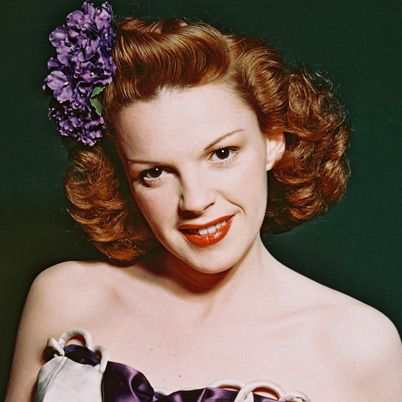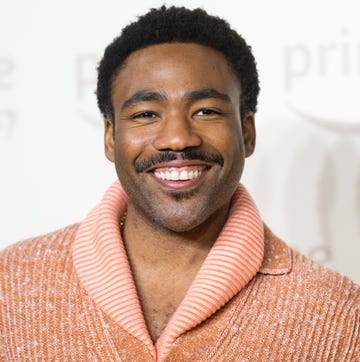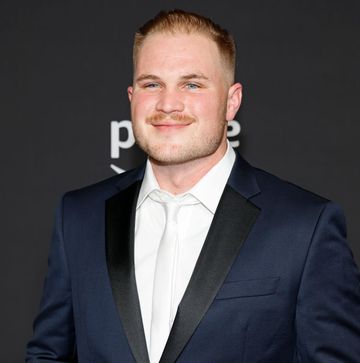1922–1969
Who Was Judy Garland?
Actor and singer Judy Garland achieved international fame in 1939 with her breakout role in The Wizard of Oz. Dubbed the “world’s greatest entertainer,” the Minnesota native went on to star in several other movies and earned Oscar nominations for her roles in 1954’s A Star Is Born and 1961’s Judgment at Nuremberg. She also had a successful singing career later in life, winning two Grammys for her 1962 live album Judy at Carnegie Hall. The mother of Liza Minnelli, Garland died of an accidental overdose in June 1969 at age 47.
Quick Facts
REAL NAME: Frances Ethel Gumm
BORN: June 10, 1922
DIED: June 22, 1969
BIRTHPLACE: Grand Rapids, Minnesota
SPOUSES: David Rose (1941–1944), Vincente Minnelli (1945–1951), Sidney Luft (1952–1965), Mark Herron (1965–1969), and Mickey Deans (1969)
CHILDREN: Liza Minnelli, Lorna, and Joey
ASTROLOGICAL SIGN: Gemini
Life as a Child Star
Judy Garland was born Frances Ethel Gumm on June 10, 1922, in Grand Rapids, Minnesota. Her parents, Frank and Ethel Gumm, were vaudeville performers who owned a movie theater, where the family performed between films. Thrust into show business at an early age, Garland was just 2 years old when she made her stage debut. Known as “Baby Gumm,” she gave her first public performance at a Christmas show at her parents’ theater, in which she tap-danced with her older sisters, Dorothy Virginia and Mary Jane, and sang a solo of “Jingle Bells.” Before long, the siblings began performing together regularly as the Gumm Sisters.
In 1926, when she was 4, Garland’s family moved to Lancaster, California, amid rumors her father was gay and had engaged in affairs with young men. In Lancaster, she and her sisters studied acting and dancing at the Meglin Kiddies professional school (attended by many child stars including Shirley Temple). They also started performing gigs their mother had arranged for them as their manager and agent. In 1929, Garland made her film debut with the Gumm Sisters in the musical short The Big Revue. The following year, the trio appeared in three more short films: A Holiday in Storyland, The Wedding of Jack and Jill, and Bubbles.
During this time, Garland performed in children’s stage shows multiple times a week, at her mother’s insistence, and was often charged with singing powerful solos. To keep up with the busy schedule, Ethel reportedly gave her pills to both keep her awake and put her to sleep. Garland and her sisters also started attending private school in 1933 at the Hollywood Professional School in Los Angeles.
In 1934, the Gumm Sisters took their act to the World’s Fair in Chicago. Traveling with their mother, the sisters played at a theater with comedian George Jessel, who reportedly suggested they change their name to the Garland Sisters, which they did. The youngest Garland also changed her first name to Judy, after the Hoagy Carmichael song of the same name. Thus, Frances Gumm become Judy Garland.
Garland became a solo act at the age 13 after signing a movie contract with MGM Studios in September 1935 without so much as a screen test. That November, Garland debuted the song “Zing! Went the Strings of My Heart” on a radio broadcast. Shortly after the program aired, she suffered a great personal loss when her father died of spinal meningitis.
Filmography
Amid her grief, Garland continued on her path to stardom. She landed her first feature-length movie role in the 1936 football-themed musical comedy Pigskin Parade, in which she sang three solos. In order to make her major film debut, however, Garland had to be loaned to 20th Century Fox for five weeks. Despite signing her on the spot, MGM was slow to cast her in any feature projects abd constantly compared her to fellow singer Deanna Durbin, who appeared alongside her in the 1936 short Every Sunday.
Early Roles
It wasn’t until Garland sang “You Made Me Love You” at a birthday party for actor Clark Gable that roles started pouring in. In 1937, she appeared in the MGM musical Broadway Melody of 1938, in which she sang Gable’s birthday party song, and starred as an aspiring actor in Thoroughbreds Don’t Cry with her friend Mickey Rooney. Playing a girl-next-door type, Garland went on to co-star with Rooney again in Love Finds Andy Hardy in 1938. The two proved to be a popular pairing, and they co-starred in several more Andy Hardy films.
At the time, Garland was forced to work excessively long hours and was under pressure from the studio about her looks and her weight. She was given “pep pills,” or amphetamines, to boost her energy and control her appetite, which she soon became reliant on, along with other pills to help her sleep. The actor and singer was also put on an incredibly strict diet and her food intake was regularly monitored. In the midst of this, she was reportedly sexually harassed and assaulted by MGM studio head Louis B. Mayer and other studio executives.
Oscar win for The Wizard of Oz
In 1939, a 16-year-old Garland scored one of her greatest on-screen successes with The Wizard of Oz, which showcased her contralto vocal range in signature songs like “Somewhere Over the Rainbow.” She was also praised for her acting abilities, winning a special Academy Award known as the Juvenile Award for her portrayal of Dorothy, the girl from Kansas transported to Oz.
Garland soon made several more musicals, including Babes in Arms (1939), Strike Up the Band (1940), Babes of Broadway (1942), and For Me and My Gal (1943) with Gene Kelly. She played her last juvenile role in Meet Me in St. Louis in 1944, in which she sang “Have Yourself a Merry Little Christmas.”
Breakdown during The Pirate
Upon entering adult stardom, Garland starred in her first dramatic film, 1945’s The Clock, for which she played a woman in a wartime romance. It was her only non-singing role for MGM. She soon returned to musicals, appearing in Ziegfeld Follies (1945), a mishmash of comedy sketches and musical numbers. The actor next starred in The Harvey Girls in 1946, playing a woman who travels to the southwest to marry a man she never met.
In 1947, Garland suffered a nervous breakdown while filming The Pirate (1948). Overworked and under the influence of prescription drugs, she began exhibiting erratic behavior. According to biographer Gerold Frank, Mayer brought in a psychiatrist on set to treat her fragile mental state, but only so she could continue working. After she hallucinated she was on fire in the middle of a scene, she was sent to Las Campanas sanitarium in California. She eventually completed filming upon her release but missed most days of shooting. That July, Garland survived a suicide attempt, after which she was sent to another mental health facility in Massachusetts.
Dropped from MGM
Despite her fragile state, Garland soon returned to work, starring alongside Fred Astaire in the 1948 hit Easter Parade, which became the highest grossing musical of the year. Her successful performance earned her roles in two more films—Annie Get Your Gun and The Barkleys of Broadway—but she was later replaced in both musicals after missing several days of filming due to migraines and other health issues.
Likely exhausted from years of constant work and from all the medications she used to keep herself going, Garland developed a reputation for being unreliable and unstable. Her career appeared to be spiraling downward. Garland was able to complete only three more movies—Words and Music (1949), In the Good Old Summertime (1949), and Summerstock (1950)—before MGM dropped her from her contract in September 1950, citing her tardiness, intoxication, and weight gain as factors that contributed to the decision. She attempted suicide again around the time of her dismissal.
Editor’s Note: If you or someone you know is struggling with suicidal thoughts or self-harming behaviors, call or text 988 to get help from the 988 Suicide & Crisis Lifeline.
Rebuilding Her Career on Broadway
In 1951, Garland started to rebuild her career with help from producer Sidney Luft, whom she later married. She starred in her own vaudeville-style show on Broadway at the Palace Theater, which drew large crowds and ran for more than 20 weeks. More than simply showcasing her powerful and expressive voice, the revue also proved that Garland was a dedicated performer, helping to dispel the earlier negative stories about her. She earned a special Tony Award for her work on the show and her contributions to vaudeville in 1952.
Comeback in A Star Is Born
Around this time, Garland and Luft formed their own production company, Transcona Enterprises, which partnered with Warner Bros. to produce one her greatest films: A Stars Is Born (1954). Starring opposite James Mason, Garland gave an outstanding performance as a woman who obtains stardom at the price of love. Her rendition of “The Man That Got Away” is considered one of her best performances on film. She was nominated for both an Oscar and a Golden Globe Award in the Best Actress category.
Despite earning critical acclaim, Garland’s mental health and addiction issues during filming contributed to the movie’s production delays, which did not mend her reputation for being unreliable. As such, she didn’t secure another film role until her 1961 appearance in Judgement at Nuremberg. For her portrayal of a woman persecuted by the Nazis, she earned an Academy Award nomination for Best Supporting Actress, as well as a Golden Globe nod. In 1963, Garland appeared in the drama A Child Is Waiting before giving her final film performance in the British-American musical I Could Go On Singing.
Variety Show
Garland later tried her hand at television, starring in The Judy Garland Show from 1963 to 1964. The variety program went through many changes in its short run, but its strongest moments featured Garland showcasing her singing ability. Her two daughters, Liza Minnelli and Lorna Luft, made appearances on the show, as did her old co-star Mickey Rooney. For her work on the show, Garland earned an Emmy Award nomination for Outstanding Performance in a Variety or Musical Program in 1964.
Music Career
In the 1960s, Garland spent more time as a singer than an actor as she released several live concert albums. Her 1961 record Judy at Carnegie Hall won two Grammy Awards, making her the first woman to win Album of the Year in 1962. She also won the trophy for Best Solo Vocal Performance. Despite all of her successes as a singer, these were the only Grammy wins in her lifetime.
Garland went on to give critically acclaimed performances at other major venues, resulting in the concert albums Live at the London Palladium (1965) and Judy Garland at Home at the Palace: Opening Night (1967.) Nearly three decades after her death, she was posthumously awarded a Lifetime Achievement Award at the 1997 Grammys.
Substance Abuse
Garland struggled with substance abuse issues throughout her entire career. She was first introduced to amphetamines and barbiturates as a child by her mother but later became addicted under the guidance of MGM. “They’d give us pills to keep us on our feet long after we were exhausted. Then they’d take us to the studio hospital and knock us out with sleeping pills,” Garland told biographer Paul Donnelley. “Then after four hours they’d wake us up and give us the pep pills again so we could work 72 hours in a row.”
By her late 20s, the actor and singer was also heavily abusing alcohol. Her struggles with addiction impacted every facet of her life, taking a toll on her health and well-being, and ultimately contributed to her multiple suicide attempts. After decades of heavy substance abuse, Garland died from an accidental overdose in 1969.
Spouses and Children
Garland was married a total of five times. She was still a teenager when she started dating her first husband, composer David Rose, who was 12 years older than her. Garland’s mother and MGM were concerned the relationship would ruin her reputation as a wholesome girl-next-door. Their vocal disapproval led the couple to elope in Las Vegas in July 1941. At the time, Garland was just 19 years old.
She soon became pregnant, but Rose—as well as her mother and studio executives—pressured her to have an abortion. Garland’s union with Rose was decidedly short-lived, with the pair divorcing after three years of marriage in June 1944.
On the set of Meet Me in St. Louis, she met director Vincente Minnelli, who was 20 years her senior. They soon wed in June 1945. Garland was 23 years old when she gave birth to their daughter, Liza Minnelli, in March 1946. Unfortunately, Garland’s second marriage only lasted a little longer than her first. Their relationship was practically over by 1949, partly due to her personal struggles with addiction and mental health. They officially divorced in March 1951.
Shortly after her contract with MGM was terminated, Garland started dating producer Sidney Luft. She married him in June 1952, and they soon had two children together: a daughter, Lorna, in 1952 and a son, Joey, in 1955. The pair had a stormy relationship by some reports. After many separations, Garland divorced Luft in May 1965 following a bitter custody battle.
She quickly remarried that November to actor Mark Herron, who briefly served as her tour promoter. Their marriage lasted only a few months before dissolving, with the pair officially divorcing in February 1967.
Garland next wed former bandleader and club manager Mickey Deans in March 1969. She had met him three years prior when he sold her prescription drugs. Their union was cut short, however, when she died just a few months later.
Final Years, Death, and Legacy
In her final years, Garland was still in demand as an entertainer, playing gigs around the world. In 1967, she made a critically acclaimed return to Broadway for At Home at the Palace. Still, she continued to struggle heavily with substance abuse and was in serious financial trouble, owing hundreds of thousands of dollars in unpaid taxes.
The next year, Garland went to London for a five-week run at the Talk of the Town nightclub. During these performances, audiences took notice that Garland didn’t look well on stage. One review from the Observer in January 1969 described her as “thinner now, almost haggard.”
On June 22, 1969, Garland died of an accidental overdose at the age of 47. She was found by her fifth husband, Mickey Deans, in her London apartment. Garland was survived by her three children: Liza, Lorna, and Joey.
The legacy of Garland has been carried on by her daughters, both of whom are singers and have had varying degrees of success. Lorna wrote about her life with Garland in her 1998 autobiography, Me and My Shadows: A Family Memoir. It became the basis for the 2001 television mini-series Life with Judy Garland: Me and My Shadows. Both of the featured actors—Tammy Blanchard as young Judy and Judy Davis as more mature Judy—took home Emmy Awards for their portrayals of the famed entertainer.
Despite her premature death, Garland continues to maintain a devoted following. There are countless fan sites online as well as published biographies that explore almost every aspect of her life—her brilliant talent, her professional successes and failures, and her myriad of personal struggles. She is even revered as a gay icon, in part because of the personal struggles she experienced.
To honor the late star, the Judy Garland Museum opened in her hometown of Grand Rapids, Minnesota, in 1975. The museum holds an annual festival in celebration of her life. More recently, the 2019 biopic Judy, starring Renée Zellweger, explored Garland’s final year in London. And, as of August 2025, fans can experience The Wizard of Oz on the 160,000 square-foot, 16K screen at the Sphere in Las Vegas. The screenings included immersive 4D elements, like high-speed fans, that make you feel like you’re experiencing a tornado in Kansas.
Quotes
- I was born at the age of 12 on a Metro-Goldwyn-Mayer lot.
- On her battle with alcoholism: My whole life, this disease has been rampant. I inherited it, and it’s been horrendous, but I have always asked for help.
- We cast away priceless time in dreams, born of imagination, fed upon illusion, and put to death by reality.
- You are never so alone as when you are ill on stage.
- A really great reception makes me feel like I have a great big warm heating pad all over me.
- Sometimes I felt as if I was performing in a blizzard.
- If you want fame you have to pay for it—and brother, I have!
- I’m always laughing at myself. I must be a very funny person to live with.
- Hollywood is a strange place if you’re in trouble. Everybody thinks it’s contagious.
- I can live without money, but I cannot live without love.
- I’ve always taken The Wizard of Oz very seriously, you know. I believe in the idea of the rainbow. And I’ve spent my entire life trying to get over it.
- Be a first rate version of yourself, instead of a second rate version of somebody else.
- In the silence of night I have often wished for just a few words of love from one man, rather than the applause of thousands of people.
Fact Check: We strive for accuracy and fairness. If you see something that doesn’t look right, contact us!
The Biography.com staff is a team of people-obsessed and news-hungry editors with decades of collective experience. We have worked as daily newspaper reporters, major national magazine editors, and as editors-in-chief of regional media publications. Among our ranks are book authors and award-winning journalists. Our staff also works with freelance writers, researchers, and other contributors to produce the smart, compelling profiles and articles you see on our site. To meet the team, visit our About Us page: https://www.biography.com/about/a43602329/about-us
Catherine Caruso joined the Biography.com staff in August 2024, having previously worked as a freelance journalist for several years. She is a graduate of Syracuse University, where she studied English literature. When she’s not working on a new story, you can find her reading, hitting the gym, or watching too much TV.





















